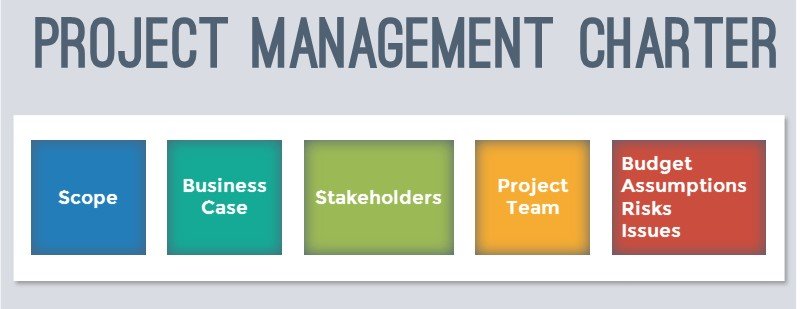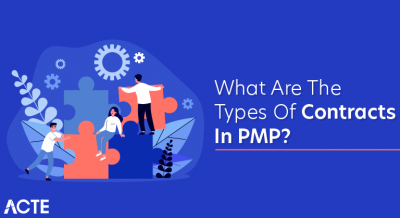
- Good project management means documenting what you will do as well as what has been done. Both the project charter and project scope are created early in the initiation phase of a project, and they each help steer the project in the right direction.
- While both of these documents are crucial to getting a project off the ground, one difference between the project scope and project charter lies in their purposes, while others lie in their audiences and content.
Purpose Of The Project Scope
- When comparing the purpose of a project charter vs a scope statement, the main difference is the project scope defines the parameters of the project. Initially, a preliminary scope document is prepared (along with the charter and other initiation documents) to map out the goals.
- This document is usually presented to the team leads who will be contributing members to the project team, though it does not include how tasks will be completed.
- For example, in a construction project, the preliminary scope would describe the structure to be built, including the number of rooms, the square footage and the number of entrances.
The project scope should address the following:
- Description of the project scope (what is and isn’t included)
- Performance requirements for company to accept the project’s deliverables
- List and descriptions of all deliverables
- List of project constraints (such as time, money and resources)
- Assumptions about the project
Project Scope Helps With Accountability
- The scope document will help stakeholders determine whether a project is complete. Since the scope document defines what the project will deliver, it is useful throughout the project for determining if the project is on schedule to conclude successfully.
- If your project is to implement a suite of software that includes three applications, and you have completed two, you have not delivered on your promised scope.
- Scope documents often change during a project for this reason. Unlike a charter, scope documents are considered “living” documents, and, as new information is discovered, the goals can be modified.

What Is A Charter Document?
- A charter is a formal document that is like a road map for what an organization, team or project is intended to be and accomplish.
- It includes who’s involved, what the goals are, who has the authority and over what and whom and if there is a life cycle to the group or project when it is complete.
Writing A Good Team Charter
- Much like a project charter, a team charter should accomplish the same things for any team. Its components are similar but applied to the team rather than a project.
- It will explain why the team is being created and what kinds of projects it will spearhead while outlining the objectives for the team’s future and clarifying parameters for measuring the team’s success.
- The charter will clearly state roles – who’s in charge, what their authority entails, who the team members are, what skills they all bring to the table and how those skills will best be used.
- The document will explore the budget allocated to the team as well as the resources at their disposal. Also, it establishes how internal audits and reviews will be undertaken as to progress on the team’s projects, along with the execution of team evaluations and the frequency thereof. Communication methods and expectations should also be outlined.
- A good team charter should help keep miscommunication to a minimum and keep a team focused on its objectives.
Charters As Guiding Forces
- The charter document clarifies power structures, establishes communication plans and serves as a rough guide on budgets and allocations. All this might be perceived as hamstringing matters before they even get started.
- But the charter helps protect projects and teams by setting out guidelines and clear aspirations as well as limitations on expectations and roles. A well-written charter document will provide and protect the scope for teams, projects and organizations.
What Is A Project Charter?
- The project charter, in the form of a problem statement and project goals, explains why the company should undertake the project. It also identifies involved stakeholders, any known risks and limitations, potential benefits, basic budget and timeline information and the scope of the project.
- Other content usually includes project assumptions, success criteria, project approval requirements, details about the project team and a place for sponsors to sign off on the project.
- After a project initiator completes the charter, he presents it to stakeholders for approval. If successful, the sponsors will sign the project charter, and the project can officially kick off.
- If the stakeholders reject the project, there may be negotiations about project details to address any concerns mentioned.
Elements Of A Project Charter?
- Managing a project from start to finish is anything but easy. You need to plan every step of the process, set realistic objectives and anticipate any challenges that may arise.
- A lack of clear goals is the primary reason most projects fail. Before getting started, make sure you understand the role of a project charter in project management and why it’s crucial to your success.Project Charter Definition
- A project charter outlines the key aspects of your project, including its general scope, goals, milestones, budget and participants. This document is created at the start of a project and its role is to define its purpose and requirements.
- It also acts as an agreement between the project manager, key stakeholders and sponsors, listing their primary roles and responsibilities.
- Project charter elements may include a short description of the project and its organizational structure as well as any risks and constraints. In general, the information is presented briefly.
- Think of it as a road map that outlines where you’re going, what your goals are, who is going to help you and what resources you need to reach your destination.
- As a business owner or project manager, you must define these steps early in the project lifestyle. This document helps ensure that everyone is on the same page and shares a common vision.
- When done right, it can prevent miscommunication and misunderstanding, keep the team organized and provide a clear reporting system.
Components Of A Project Charter
- There are no set rules for drafting a project charter. You can include as little or as much information as you wish. However, it’s recommended to keep it short and concise.
Project charter elements may include some or all of the following:
- Project purpose
- Description
- Short- and long-term goals
- General scope
- Milestones
- Deliverables
- Stakeholder list
- Roles and responsibilities
- Potential risks
- Assumptions and constraints
- Key performance indicators
- Budget outline
- Standards and methodologies
- Project approval requirements
Some organizations cover all of these factors when creating a project charter. Others focus on the key aspects without going into details. At the very least, this document should include a scope statement, a business case, project objectives and deliverables, team structure, requirements and preliminary estimates.
When you draft the project charter, emphasize the return on investment. Be clear about how the project will benefit your business and why it matters for the company’s bottom line. This is the first thing sponsors and stakeholders will see. Show them exactly what they get for the time and money they’re spending.
Why Create A Project Charter?
- Any project regardless of its size takes time and work. It also requires careful planning at every step of the process. The project charter outlines the steps needed to bring your vision to life.
- This document recognizes the existence of your project, states its objectives and defines its start date. At the same time, it allows you to allocate resources more effectively and helps prevent disagreements among stakeholders.
- This tool supports the decision-making process and ensures that your project aligns with the company’s goals. Furthermore, it authorizes the project manager to procure resources and spend money.
- By drafting a project charter, you’ll be able to identify any potential risks and drawbacks ahead of time. This can help you plan things out and avoid costly mistakes down the road.
- The project charter can also serve as a reference for your team later on. You may use this document during meetings to remind stakeholders of the project’s benefits and goals.
- This document also makes it easier to create a budget and come up with a rough estimate of how much the project will cost.
- At the end of the day, it can help you mitigate risks and provide a solid foundation for making informed decisions.
Project Management Control Issues
- One reason projects are not completed on time or cost more than estimated is because critical control issues are not addressed.
- Understand the key control issues you face and set up your project with appropriate controls to help assure your project is a success.Change Management
- Request that a member of senior management announce the project to all stakeholders, why the project has been launched and the impact on those affected. By involving those affected, you will receive less resistance to change.
Schedules
Make sure your project starts on time and that tasks are completed on a timely basis. To help assure your project completes by the planned completion date, employ the critical path method. This method defines critical and non-critical tasks that impact timely project completion.
Costs
Break down budgeted costs into easy-to-track categories. Make sure costs are recorded as soon as they are incurred so that you have a clear understanding of actual costs. Instruct project team members who are responsible for approving bills; otherwise costs can quickly escalate.
Requirements
- Use a structured approach for defining requirements so that the delivered project matches the expectations of project stakeholders.
- For example, if requirements for a new computer system only define the reports that will be produced but not the underlying data that needs to be captured to produce those reports; the completed system may not be capable of producing the specified reports.
- Rather than waiting until the end of a project to deliver what stakeholders want, provide interim deliverables to make sure you and the stakeholders are in agreement with project progress.
- Waiting until the end of the project to share information with users could result in project cost overruns if changes must be made in what was delivered.
Communications
Make sure communications to the project team and stakeholders is clear and understandable. Breakdowns in communications can quickly derail a project and impact team member morale.
Staffing
Make sure you have staffed the project with people who have all of the required skills needed to achieve project objectives. Have weekly meetings with project staff so you can quickly address any project team or stakeholder problems.
Checklist
Prepare a checklist of all areas you need to monitor and control. Decide on what you will monitor and how often. Do not delay acting on issues that are not under control.
Project Charter Vs Project Plan
- The project charter serves as a reference for creating other project documents like the project plan. While sometimes confused with each other, the project charter vs. project plan differs in terms of purpose, contents and depth.
- While a project initiator creates a project charter with basic information and the intent to get approval for a project, the project team creates a project plan only after the project receives approval.
- The project plan goes much deeper to include details such as specific project task assignments, human resources plans, a communication management plan, tools used and change control procedures.
- The contents also include the detailed scope of the project, a procurement plan, risk register, quality management plan, budgets and schedules.
- Therefore, the project plan consists of many documents rather than a single document like the project charter. The plan will serve as a guide on how to actually carry out the project’s day-to-day activities.
Project Charter Purpose
The main project charter purpose is to justify the company’s need for the project in terms of potential benefits versus costs, time and resources so that the company will approve the project. At the same time, the document serves these purposes:
- Clarify costs and resources. A project charter provides a basic estimate of how much the project will cost and which human resources it will require. Thus, it serves as a way to determine whether the company’s budget and current staff can handle the requirements. This helps reduce the risk that the company starts a project that it can’t afford or handle and is unable to otherwise see through to completion.
- Use as a reference for further project planning. Although it only covers the basics, the project charter helps the project manager with actual planning activities.
- For example, the estimated project cost serves as a baseline for obtaining necessary resources, while the estimated time to completion helps create the project schedules and work breakdown structures that help with assigning tasks.
- The project team can also revisit the project charter to help avoid taking on work beyond the scope of the originally approved project.
- Improve project communication. Since it identifies stakeholders and their roles and responsibilities related to the project, a project charter helps keep the whole project team informed. Team members can easily identify who is responsible for different tasks so that there is less confusion that might lead to costly mistakes or disrupt the project execution process.
- Identify potential problems. A project charter also serves as a basic risk assessment tool that will help the project team prepare for potential problems. For example, the charter might cite scope creep and budget creep as two risks to watch. The team would know to monitor change requests carefully and ensure that activities closely follow the budget so that the company doesn’t have to drop the project prematurely due to lack of financial resources.
- Allow for negotiation about project details. If the stakeholders reject the project initially, the project charter serves as crucial documentation that allows for further negotiation to try to obtain approval. For example, stakeholders can look closely at the project requirements and resource requirements and possibly negotiate on factors such as scope, cost or human resource needs.
Writing A Project Charter
When writing a project charter, you’ll often use a template that your company provides, but you can also find templates online. Although not all templates look the same or use the same terminology or order for the various sections, you’ll usually include these common project charter elements:
- Basic project overview. This header section usually lists the project’s title, date and contact information for at least the project’s manager and head sponsor.
- Project purpose and benefits. This is the business case for the project that states what needs it fulfills in the company and which benefits it will offer. It should mention a specific problem that the project will solve and how it will do so.
- Project scope. Not only should this section explain what is part of the project, but it should also clarify what the project should not include. This will help prevent scope creep later.
- Project objectives and deliverables. This section should include specific, clear and measurable goals for the project along with the expected intangible or tangible deliverables. For example, the deliverables for a company’s app project might include various testing versions along with a final version that goes out to end users.
- Project assumptions and constraints. This part will list assumptions you have about the project, its resources and its activities. For example, you might assume the workers you need will be available when scheduled. You’ll also list constraints and limitations such as time, resources, money, government regulations and any technical requirements.
- Project risks and dependencies. This section lists specific risks that can impact the project’s success. This might include issues like potential system incompatibility, changes in laws, bad weather or staffing issues. You’ll also list dependencies such as important tasks that need to be completed before additional project tasks can proceed.
- Budget, schedule and human resource requirements. While you won’t have to go into detail, you should list any important personnel or tools you’ll need, an estimated project length or completion date and a basic estimated project cost.
- Project milestones with a basic timeline. Here you’ll list some high-level milestones for the project along with projected dates if available. This might include events like the project’s kick-off meeting, finalization of requirements, testing, training and hand off of the end product.
- List of project team members. You’ll want to list the project team members along with their job title and description of responsibilities for the specific project.
- Signature area. Key stakeholders including the customer, project sponsors and project manager will need to sign and date this area to officially approve the project.
Written before a project gets official approval, a project charter offers a basic description of a project and connects it to the organization’s goals to present a business case.
Typically just one to three pages long, the document serves to market the project’s benefits so that the company can determine whether the costs are worth the potential benefits.
The numerous project charter elements also have purposes related to improving project communication, clarifying resource needs, helping with risk mitigation and moving forward with official project planning.





